Rupert's Talks in Detail
Covid-19 Update : Most of Rupert's talks can be given via Zoom or Skype if preferred. These are highlighted below.
Please note that all talks come in 20 minute, 40 minute and 60 minute versions. Rupert offers talks on historical, military and seasonal subjects. Each talk involves either a screen presentation, objects to handle, costume changes - or all three!
Each talk is followed up by a quiz for you to use at your next meeting, suggestions for days out and a list of further reading that you can give to your members.
Scroll down to find details of the talk that you are interested in.
History Talks
NEW TALK
 Plagues, Pandemics and Covid-19 [Zoom Friendly]
Plagues, Pandemics and Covid-19 [Zoom Friendly]
The world has been in Lockdown due to the new disease Covid-19. But how does this most recent pandemic compare to earlier pandemics such as the Spanish Flu, SARS, Smallpox or the Black Death? In this topical talk based on his forthcoming new book, Rupert Matthews explains how pandemics occur, why some new diseases are more dangerous than others. The talk then looks at the progress of past pandemics, society's reaction, their causes and cures before turning to Covid-19 and comparing it to past pandemics. Not for the faint-hearted.
The Real King Arthur [Zoom Friendly]
Movies, books and television series have been produced recounting the tales of Arthur, Merlin, Guinevere, Lancelot, Galahad, Ophelia and the other legendary characters. And yet the panoply of chivalric legend is known to have been added from the 12th century onwards. But behind this later accretion of legend and romance lay much older stories firmly routed in Dark Age Britain. But scholars are divided over how much truth the older stories contain. It is generally agreed that the character of Merlin is based on the bard and poet Myrddin Wyllt, who died in about 612, while Lancelot was a Breton nobleman who died around 680. Most enigmatic of all is Arthur himself who may have been a post-Roman ruler or military commander of about 500 – though some historians doubt he even existed. This talk untangles the later legends and seeks to find the truth that lurks behind them.
Screen Presentation
The History of Buttons [Zoom Friendly]
Today we take buttons very much for granted. When we buy a new outfit it comes with buttons attached, and when we dis card the clothes the buttons go with it. But this very familiarity has bred contempt for what is really a highly sophisticated bit of practical clothing. This books starts back in antiquity before buttons were invented to show how our ancestors had problems keeping their clothing done up – and even on their persons. The invention of buttons is covered, along with the various innovations in fashion that followed rapidly. The talk also looks at the different types of button used over the centuries and at the very special uses to which buttons have been put by the fashion-conscious, spies, the military and the pearly kings and queens of London before finishing with a word about modern fashion etiquette that would be impossible without buttons.
card the clothes the buttons go with it. But this very familiarity has bred contempt for what is really a highly sophisticated bit of practical clothing. This books starts back in antiquity before buttons were invented to show how our ancestors had problems keeping their clothing done up – and even on their persons. The invention of buttons is covered, along with the various innovations in fashion that followed rapidly. The talk also looks at the different types of button used over the centuries and at the very special uses to which buttons have been put by the fashion-conscious, spies, the military and the pearly kings and queens of London before finishing with a word about modern fashion etiquette that would be impossible without buttons.
Screen Presentation, costume changes and sample buttons to handle
The Escape of Charles II [Zoom Friendly]
The English Civil Wars came to an end in the bloody Battle of Worcester in 1651. The Royalist army of 20 year old Charles II was destroyed, with Charles lucky to get away in the gathering dusk with his life. Alone, penniless and pursued by Cromwell’s Roundhead troopers, the 20 year old Charles was faced with the task of saving his own life and so keeping alive the hopes of the Royalists. He famously hid from one troop of Roundheads by hiding up an oak tree, but the weeks that followed saw him adopt a range of disguises, hide in some most bizarre places and escape by the skin of his teeth more than once. This talk explains how Charles got away with his life and eventually came back to occupy the English and Scottish thrones. Known to history as “the Merry Monarch”, Charles set out to repay those who had helped him in his hour of need in the most novel way.
Screen Presentation
Girl Power - Women at War from the Amazons to the 21st Century [Zoom Friendly]
In this talk, Rupert Matthews looks at the ways women have been involved in warfare from ancient times to the present day. Starting with the mythical Amazons, and the truth that lies behind the legend, Rupert looks at some of the great women warriors of history such as Boadicea, Zenobia of Palmyra, Artemisia of Caria, Mavia the Arab, Lagertha the Viking, Tomoe Gozen the Samurai, Joan of Arc, Mary Ralphson, Joanna Salter and Mary Dixon before looking at the mass participation of women in 20th century warfare through the WRNS, WAAFs and ATS of World War II.
Screen presentation.
Hengist: the First English King [Zoom Friendly]
Under the Roman Empire, Britain was a Christian country where the people spoke Latin or Celtic languages. Just a few generations later paganism had triumphed and most people spoke English. Alone among the former Roman provinces, Britain fell to the pagan barbarians so completely that their religion and language triumphed. The key figure in this massive change was Hengist, a German mercenary from what is now Frisia, who came to what is now Kent. Displaying guile, violence and astonishing ruthlessness, Hengist carved out a kingdom for himself – a lead followed by other warriors who together created England. Although he was such a pivotal figure in the founding of England, the facts about his life are remarkably scanty and much disputed. This talk looks at the fall of Roman Britain and explains how England came into being.
Screen Presentation
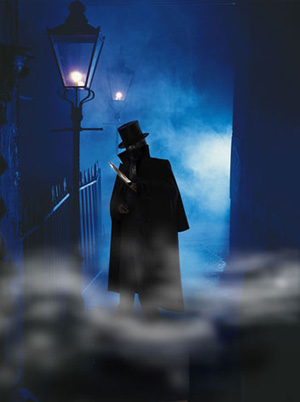 Jack the Ripper [Zoom Friendly]
Jack the Ripper [Zoom Friendly]
The gruesome murders of five prostitutes in the East End of London during the summer and autumn of 1888 terrified London. The killer struck suddenly and silently in public places, then slipped away into the night to vanish until he struck again. The unknown murderer is widely regarded as being the first serial killer, in the modern sense of the word. These murders are relatively well known, but less well known is that fact that the police at the time linked the killings to other assaults on women in the area. And by November 1888 Inspector Abberline believed that he was close to making an arrest. This talk follows the killings, but concentrates on the police investigation that was slowly closing in on the killer – when the killings suddenly stopped.
Screen Presentation
Jane Austen and the Military [Zoom Friendly]
Jane Austen includes several characters in her novels who are (or have) been in the military. This is not surprising as through most of her writing career Britain was locked in a titanic struggle against Napoleonic France in which battles such as Trafalgar and Waterloo were fought. But what does she tell us about the military of her time, and how accurate are her accounts? Characters to be touched upon include: George Wickham (Pride & Prejudice); Colonel Brandon (Sense & Sensibility); Sir John Middleton (Sense & Sensibility); Mr Weston (Emma); William Price (Mansfield Park); Mr Price, snr (Mansfield Park); Frederick Wentwork (Persuasion); Admiral Croft (Persuasion); James Benwick (Persuasion).
Screen presentation
The Kingdom of Sussex [Zoom Friendly]
The Kingdom of the South Saxons was once one of the key states of Britain. Founded in about 480, the kingdom remained independent for three centuries until its old royal family had to replace their title of King with that of Earl under the control of the more powerful Kingdom of Wessex. The dynasty finally disappeared under the Normans. This talks follows the political, social and economic history of Sussex during its years of independence and demonstrates how the economy and wars of that time still have an influence on the modern county.
Screen Presentation
The Kingdom of Lindsey [Lincolnshire] [Zoom Friendly]
Time was that Lincolnshire was an independent kingdom all by itself. Sheltering behind the untamed marshes of the Wash, Trent and Humber the Kingdom of Lindsey was small but maintained its independence for generations. Founded in obscure circumstances around the year ad450, Lindsey kept itself isolated from predatory neighbours, while carrying out a thriving trade from the docks of its capital, Lincoln.
Screen Presentation
The Kingdom of Mercia
For years the most powerful and prosperous of the small kingdoms in Dark Age Britain, Mercia Founded in obscure circumstances in around the year ad500, Mercia grew up around the Trent before spreading out to cover the lands between the Humber and the Thames, the Wash and the Severn. For generations Mercia was a beacon of culture, luxury and power until it fell sudden and catastrophic victim to the Viking invasions.
Screen Presentation
Magna Carta in the 21st Century
For centuries generations of lawyers, politicians and historians have looked back on Magna Carta as being the foundation of English freedoms and liberties. At the time it was sealed at Runneymede in 1215 it was seen as a key tool in controlling the power grab made by King John who was seeking to overturn traditional English laws and customs. Most of the provisions of this Great Charter concerned the nobles and the church, but others applied to everyone and the provisions were felt right down to the bottom of feudal society. This talk explains how Magna Carta came to be agreed, how it affected the society and law of England at the time and why more than any other medieval document it became a key foundation stone of what it means to be a Freeborn Englishman. Over the centuries nearly all the provisions have been repealed or replaced. So is the Magna Carta the foundation of English Liberty, or a defunct feudal anachronism?
Screen Presentation
The Pagan Gods of England
We use the names of our ancient pagan gods everyday. Monday is Moni’s Day; Tuesday is Tiw’s Day; Wednesday is Woden’s Day; Thursday is Thunor’s Day; Friday is Frigg’s Day. But who were Moni, Tiw, Woden, Thunor and Frigg? This talk looks at the pagan gods of the English who held sway over our land before the Christian god came and vanquished them all. Well, nearly all. A surprising number of old pagan deities have survived down to the present day in the form of folklore, legends and superstitions.
Screen Presentation
The Female Pope [Zoom Friendly]
For centuries it was firmly believed that in the chaotic 9th century a Pope John was elected, only to be unmasked as a woman named Joan. This Joan, it was said, was the daughter of noble German family who had pretended to be a boy to go to school in Mainz and from there had acquired a reputation as a highly intelligent scholar and theologian. Keeping up the pretence of being male to be able to continue her career, “John” was elected to be Pope against her will. The story was debunked in the 19th century and is now generally considered to have been a scurrilous invention. But by going back to the original medieval sources, Rupert has discovered what may well be the truth behind this bizarre legend [published as the book “The Female Pope”. This talk traces the legend, the reality and how the two became entwined.
Screen Presentation
The Lost Railways of Berkshire [Zoom Friendly]
The historic county of Berkshire was once served by far more railway lines and stations than it now has. There was a branch line to Lambourn, another to Wantage and a third to Faringdon as well as a mainline from Didcot to Newbury and Southampton. This talk looks at the vanished railways, stations and rolling stock of the lost railways of Berkshire. It explain why and how the lines were built, and why there closed down. It also looks at the surviving remnants, be they stations converted to be houses or schools or a dramatic brick bridge standing in the middle of nowhere.
Screen Presentation
Richard III – Hero or Villain? [Zoom Friendly]
Of all the Kings of England, none has acquired such an unpleasant reputation as King Richard III. Given that the throne has been occupied by murderers, adulterers and mass killers that is going some. Of course, Richard lived in a violent time and was undoubtedly a violent man, but does he really deserve the reputation that was heaped on him by the man who killed him? This talk traces the life of Richard and looks at the contemporary sources that describe his actions – seeking to untangle the truth from the different accounts that were all written either by his friends of his enemies.
Screen Presentation
The Real Robin Hoo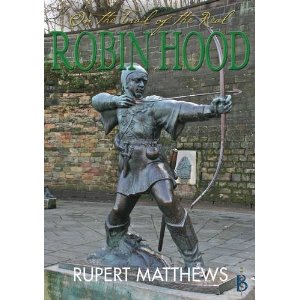 d [Zoom Friendly]
d [Zoom Friendly]
We’ve all seen the films, but is there anything more to it than some fun tales? Was there really an outlaw named Robin Hood? What about Maid Marion & Little John? This talk starts with the classic legendary Robin Hood familiar from modern films and books, then travels back in time shedding the accretions, inventions and legendary features along the way until we get back to the 13th century and the bandits of Sherwood Forest. Along the way we meet a colourful cast of characters and fall across some real surprises.
Screen presentation
Ernest Shackleton [Zoom Friendly]
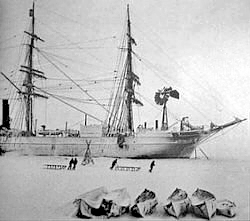 Ernest Shackleton was the greatest explorer of his time. He penetrate vast areas of Antarctica for the first time, got further south than anyone before him and navigated the seas around Antarctica more thoroughly than anyone else. Everywhere he went, Shackleton took with him teams of scientists to ensure that as much could be learned of the wildlife, climate and geology as possible. And on all his journeys, voyages and expeditions, Shackleton defied the odds by never losing a man to the hostile environments that he braved. Only one man ever lost his life on a Shackleton expedition – Shackleton himself. This talk follows Shackleton’s life and career, outlines his achievements and explains how his remote grave has recently become an unlikely tourist attraction.
Ernest Shackleton was the greatest explorer of his time. He penetrate vast areas of Antarctica for the first time, got further south than anyone before him and navigated the seas around Antarctica more thoroughly than anyone else. Everywhere he went, Shackleton took with him teams of scientists to ensure that as much could be learned of the wildlife, climate and geology as possible. And on all his journeys, voyages and expeditions, Shackleton defied the odds by never losing a man to the hostile environments that he braved. Only one man ever lost his life on a Shackleton expedition – Shackleton himself. This talk follows Shackleton’s life and career, outlines his achievements and explains how his remote grave has recently become an unlikely tourist attraction.
Screen Presentation
The Sieges of Leicester [Zoom Friendly]
Twice the city of Leicester has been put under siege by enemy armies. In the winter of 943 the Danish citizens of Leicester rose up in rebellion against their English rulers to join the Viking King Olaf Guthfrithson of York. Olaf marched to Leicester, but was at once put under siege by King Edmund of Wessex. The bitter fight dragged on for months, and ended in a surprise peace deal. Centuries later, in May 1645, the Royalists came to capture the staunchly Parliamentarian city of Leicester. After a heavy artillery bombardment, Prince Rupert ordered his Royalist infantry to attack a breach in the walls. Exactly what happened next has been the subject of dispute and uncertainty. Some blame the defenders for breaking the rules of war, others denounce the attackers for bloodthirsty rage. Whatever the truth, Leicester went up in flames, hundreds of civilians were killed and the city was laid waste.
The Suffragettes
Although they were allowed to vote in medieval times – and often did – by Victorian times women were banned from voting in British elections. In 1866 a petition with 1,500 signatures [including Florence Nightingale] calling for Votes for Women was presented to Parliament. It was dismissed out of hand, but the battle was on. For the next six decades a succession of women and men campaigned for women to be given the vote. There was a split into Suffragists [who stayed within the law] and Suffragettes [who did not]. Hundreds were thrown into prison and one – Emily Davison – was killed before women were finally given the vote. This talk traces the path of emancipation as women struggled to gain the right to vote.
Screen Presentation and period artefacts to handle
Medieval Women
Our popular image of the medieval world is one of bold knights, savage wars and brutal kings – a world in which men wield swords and women did what they were told. But a new translation of previously unpublished medieval documents reveals that men did not get it all their own way – far from it. This talk follows the careers of five medieval women to show how women dominated society through their skilled use of the law, education, business and marriage – often in quite unexpected and surprising ways.
Screen Presentation
The Wreck of the Titanic [Zoom Friendly]
When the RMS Titanic went down on the night of 12 April 1912 more than 1,500 people lost their lives. The terrible disaster rocked the shipping world, was the subject of an intensive inquiry and has subsequently been featured in numerous books and films. This talk looks at the building of the ship, and its intended role in the maritime trade of the period. Most of the talk, however, concentrates on the ship’s final voyage and the wreck. It explains what happened on that fateful night, and why. It also seeks to debunk the myths and correct misconceptions – including the famous “moving deckchairs on the Titanic”.
Screen Presentation
Military Talks
“All Over by Christmas”
This talk coves the first year of the First World War. When the Great War, as it was called at the time, broke out most people believed that it would follow the pattern of most wars that were fought over the previous century – it would fast-moving, massively destructive and over quickly. In the event it turned out to be a war like no other, before or since. The talk covers the Retreat from Mons, the Miracle on the Marne, the Battle of Tannenberg, the fall of Serbia, the fighting around Ypres [Wipers] and the winter stalemate. It concludes with the British offensive at Neuve Chapelle in the spring of 1915 which set the pattern for the bloody, inconclusive fighting that would dominate for the rest of the war.
Screen Presentation
The Arrowstorm [Zoom Friendly]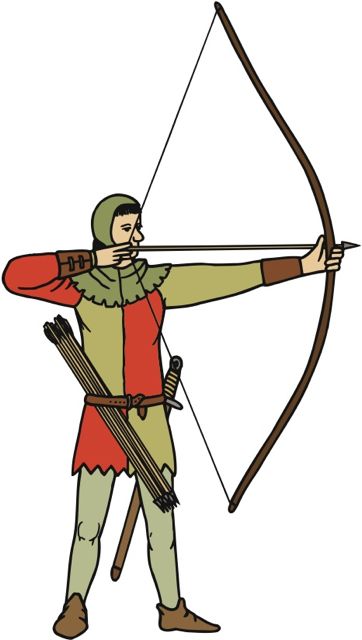
In the early 14th century a new weapon broke upon the battlefields of Europe with devastating effect: the longbow. After early successes in Wales and Scotland, the longbow made its first major appearance at the Battle of Crecy in 1346. A small, outnumbered English army utterly defeated the finest army that the mighty Kingdom of France could field. What was particularly shocking was that the men who used the longbow were humble peasants, yet they killed and defeated the wealthy nobles and knights whose position in society depended on them being able to defend their lands from invaders. It was the start of a social and military revolution, the consequences of which are still with us. This talk looks at the bow and the arrows to assess their capabilities as well as the tactics that made them so deadly. It follows the career of the longbow through key battles such as Crecy, Poitier and Agincourt explaining the drawbacks as well as the advantages of the weaponry.
Screen Presentation
Blitzkrieg - Analysis of a Legend. [Zoom Friendly]
In 1939 the German army invaded Poland. Although most observers expected the large Polish army to hold out for at least six months, it was forced to surrender after less than six weeks. The key to the crushing German victory was the tactic known as “blitzkrieg” or “lightning-war”. Blitzkrieg was developed during the 1930s by German military planners wanting to make the best use of modern weaponry and constrained by the need to avoid long wars that would enable Germany’s likely enemies to deploy their greater financial and material resources. This talk explains what Blitzkrieg was, and what it was not. It follows the great victories won by the Germans in Poland, Denmark, Holland, Belgium, France and Russia in the period 1939-1942 before explaining how the Russians finally found the tactical answer to Blitzkrieg and managed to first, stop and then crush the German war machine.
Screen Presentation
The Battle of Crecy [Zoom Friendly]
In 1346 the English army of King Edward III won perhaps the most astonishing victory of the medieval period. Edward had got to within 3 miles of Paris when he heard that his Flemish allies had abandoned him and that three large French armies were converging on him. The English army of 7,000 turned north towards safety at Calais, but had got only as far as Crecy when they found their way blocked by around 30,000 French soldiers. By nightfall, the French king was a hunted fugitive, his ally the King of Bohemia was dead and 10,000 Frenchmen lay dead on the field of battle. This talk explains how Edward managed to achieve this amazing victory against the odds.
Screen Presentation
The Dambusters [Zoom Friendly]
We’ve all seen the film, but what about the reality? In 1943 a daring raid using the very latest military technology saw a single squadron of the Royal Air Force deliver a crushing blow to the German war effort. The destruction of two of the Ruhr Dams and damage to two more crippled German steel production at a crucial point in the war and devastated th transport networks of the area. The Germans then diverted anti-aircraft guns and fighters to defend other targets vulnerable to the bouncing bomb, leaving other targets defenceless. This talk follows the development of the revolutionary bouncing bomb, the forming of the squadron and the course of the raid to explain how the Dambusters Raid was put together and why it was so effective.
Screen Presentation
The Dunkirk Evacuation
In 1940 the German Blitzkrieg inot France left the entire British army, plus many French soldiers, cut off from their lines of supply in northern France. One after another the ways out of the trap were closed off by the speeding panzers until only the port of Dunkirk was left. This talk covers the gruelling retreat of the British to Dunkirk, the savage fighting to keep the Germans at bay and the astonishing efforts made by the RAF, Royal Navy and hundreds of civilians to pick the men up from the beaches and bring them home to safety.
Screen Presentation
The Battle of Hastings & the Norman Conquest [Zoom Friendly]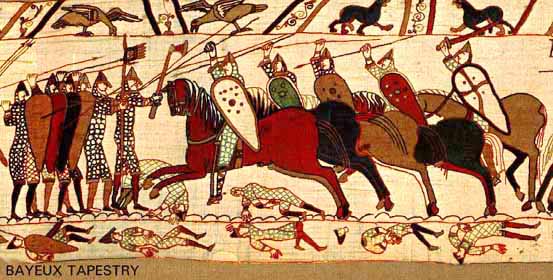
The year 1066 is the best known date in English history – and deservedly so. The defeat of King Harold Godwinson at the Battle of Hastings led to the total subjugation of England under the foreign dynasty of William of Normandy. English nobles were stripped of their titles and lands, English clergy ousted from their positions and even the English language itself driven from both Court and the courts. This talk looks at the build up to the battle to explain why it was fought, at the battle itself to explain how it was won and lost, and at the aftermath to show why this one battle had such devastating long-term results.
Screen Presentation
Hitler’s Forgotten Secret Weapon [Zoom Friendly]
In 1938 rumours started to circulate in aviation circles that the German company Heinkel were working on something very new, very secret and very deadly – but what was it? The British, French, Polish, Americans and others tried to find out, but a firm wall of secrecy backed by the Gestapo and German military had descended on Heinkel’s factory. Only a few clues seeped out. They indicated that whatever Heinkel was working on, Hitler was taking a personal interest and speed was a key factor. Then came war! In the Norway Campaign of 1940 this secret weapon of Heinkel’s went into action. The Heinkel He113 “Wonder Fighter” was fast, high-flying and devastatingly effective. Squadrons of the new fighter tore the French Air Force to pieces as the panzers rolled toward Dunkirk and then Paris. During the Battle of Britain Heinkel’s “Wonder Fighter” came close to driving the RAF from the skies. And yet today, few have ever head of it. What was the secret behind the Wonder Fighter, and why has it become Hitler’s Forgotten Secret Weapon?
Screen Presentation
Myths and Legends of World War I [Zoom Friendly]
The First World War was a war like no other. With millions of men living, fighting and dying in the hideous conditions of the trenches. The military high commands cracked down on news for security reasons, keeping the men in the dark about who the war was going. Under such conditions it was inevitable that rumours spread quickly, some of them to die quickly, but others to spread and become accepted as truth. This talk looks at some of the most famous of these – the Angel of Mons, the Crucified Canadian, the Russians in London, the Corpse Factory, the Master Spy, the Gurkha with the Silver Kukri and many more.
Screen Presentation
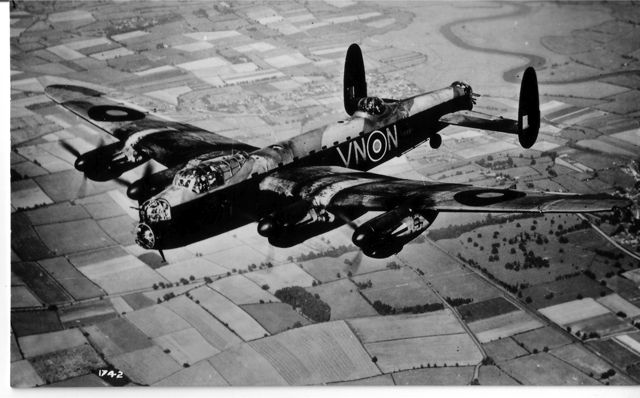 RAF Bomber Command at War [Zoom Friendly]
RAF Bomber Command at War [Zoom Friendly]
In 1936 the RAF formed a powerful new force to take the war to the enemy: Bomber Command. When war came in 1939, Bomber Command quickly learned that its pre-war tactics and aircraft were out of date when confronted by the modern fighters and air defences of the Third Reich. A swift and brutal change was undertaken under the command Sir Arthur “Bomber” Harris to transform the force into the most powerful weapon of war that the air had ever seen. This talk traces the history of RAF Bomber Command, its aircraft and its men from the shaky beginnings of 1939 to the great victory of 1945.
Screen Presentation
The Battle of Waterloo [Zoom Friendly]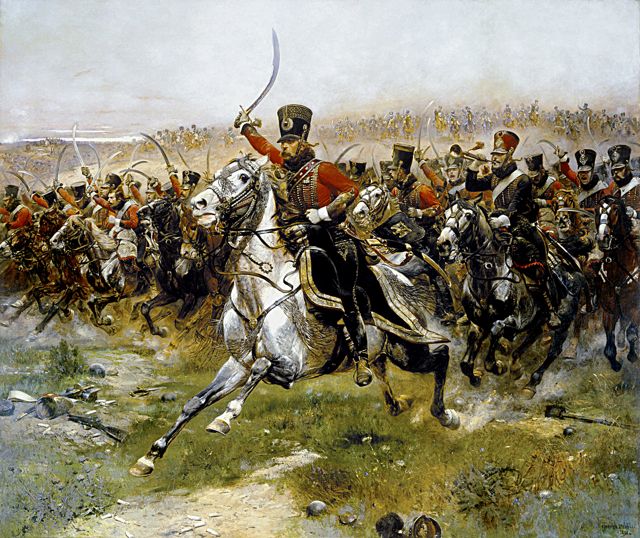
The Battle of Waterloo in 1815 is one of the best know, but least understood battles in history. The glittering reputation of the two main commanders – Wellington and Napoleon – overshadowed the other commanders present and has served to mask just how close the scales were balanced as to which would win. This talk explains the background to the battle and why it was so crucial to the history of Europe, then moves on to follow the course of the campaign and the battle itself. A thrilling military tale of missed opportunities and close shaves.
Screen Presentation
Esoteric Talks
Monsters at the Movies
Horror movies feature a wide range of supernatural monsters – vampires, zombies, werewolves among many others – all of them firmly rooted in genuine folklore from various countries. This talk studies each type of monster in turn, looking at the genuine folklore background and how the movies – using some famous examples – have adapted the monster to make them more fearsome on screen.
Screen Presentation
Yeti! [Zoom Friendly]
The Yeti of the Himalayas is only the most famous of several man-ape creatures that are supposed to live in remote regions around the globe. None are recognised by science, but each are the subject of local eyewitness statements and a good deal of supporting evidence. The creatures looked at in this talk include: Yeti, Bigfoot, Yowie, Orang Pendek, Almas, Yeren.
Screen Presentation
Seasonal Talks
The Real St Valentine [February] [Zoom Friendly]
The patron saint of love was, in reality, anything but romantic. This talk looks at the real Valentine, who was martyred on the orders of the Emperor Claudius Gothicus on 14 February 269. It then traces his career after his death as his holy reputation became mixed with spring fertility customs to produce the romantic patron saint of love that we know today. [February]
Screen Presentation
The Real St Patrick [March] [Zoom Friendly]
Everyone loves drinking Guinness and wearing green on 17 March, but who was Patrick? According to most sources he was a British shepherd who was abducted by Irish pirates and sold into slavery in Ulster. After his escape, Patrick experienced a vision from God instructing him to return to Ireland to convert the pagan race to the True Faith. Returning to Ulster, Patrick spent years seeking to spread the faith. This talk looks at the contemporary evidence for this rather enigmatic figure and the disputes that have arisen over who he was and what he did. [March]
Screen Presentation
The Real St George [April] [Zoom Friendly]
England’s patron saint is well known for having slain a dragon. This aspect of his legend has unfortunately led many people to assume that he was no more real than the mythical dragon. In fact, St George was a very real flesh and blood hero who stood up for his Christian faith against the pagan emperor Diocletion. The talk follow his real life, then looks at his career after his death as the story of his martyrdom spread and acquired additional details and adventures. And the talk explains where the dragon came from and why it is so appropriate to St George. [April]
Costume Changes
Who was Guy Fawkes? [November] [Zoom Friendly]
Burned on a million bonfires over the years, was Guy Fawkes the original fall guy? This talk follows the career of Guy Fawkes from his birth in York in 1570, through his conversion to Catholicism and his extensive career as a successful mercenary across Europe before his return to England and involvement in the Gunpowder Plot. But for all this, Fawkes was never a key conspirator and may have been cast in the guise of arch villain for the political purposes of those who caught him. [November]
Screen Presentation
A History of Christmas Food [December]
A look at how Christmas foods have changed and evolved over the centuries to produce the luxurious feasts we enjoy today. These include the staples of modern Christmas – roast turkey, brussels sprouts and mince pies – as well as foods that were once closely linked to Christmas but have now moved on – gingerbread men, roast pork and stewed apples. - With samples to snack on! [December]
Screen Presentation & samples to eat
The History of Father Christmas [December] [Zoom Friendly]
Father Christmas is most familiar to us today as a jolly old boy dressed in a red suit with white fur trimming. He visits homes on Christmas Eve to leave presents for good children [but not for bad children] and to scoff up any brandy or mince pies that might be left out for him, while his reindeer snack on the carrots. Our jolly Santa is often dismissed as an invention of the Coca Cola company or as a Victorian whimsy, but in fact his origins are much, much older and considerably darker than most people could possibly imagine. Come on a journey back into our pagan past to discover the origins of Father Christmas and find out how he developed into the figure that we know and love today.
Costume Changes
